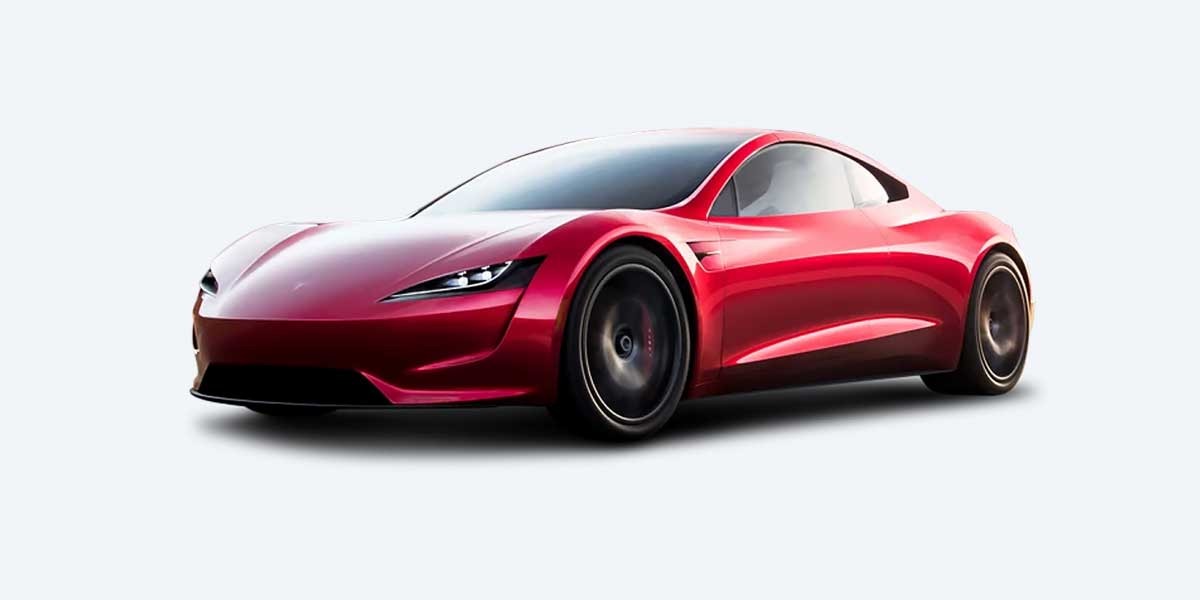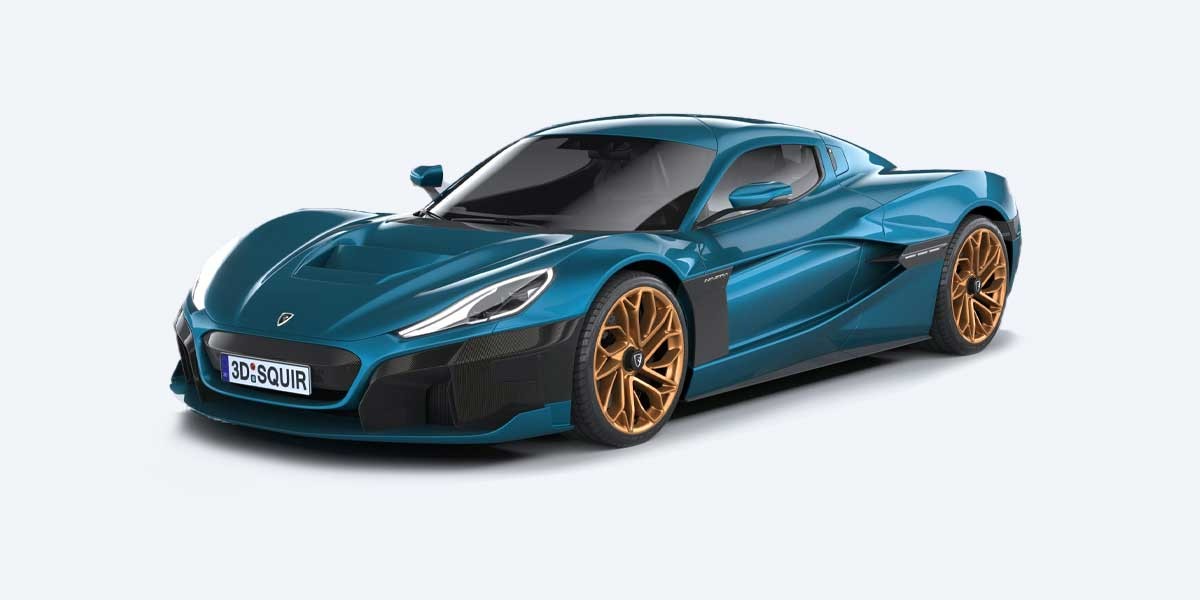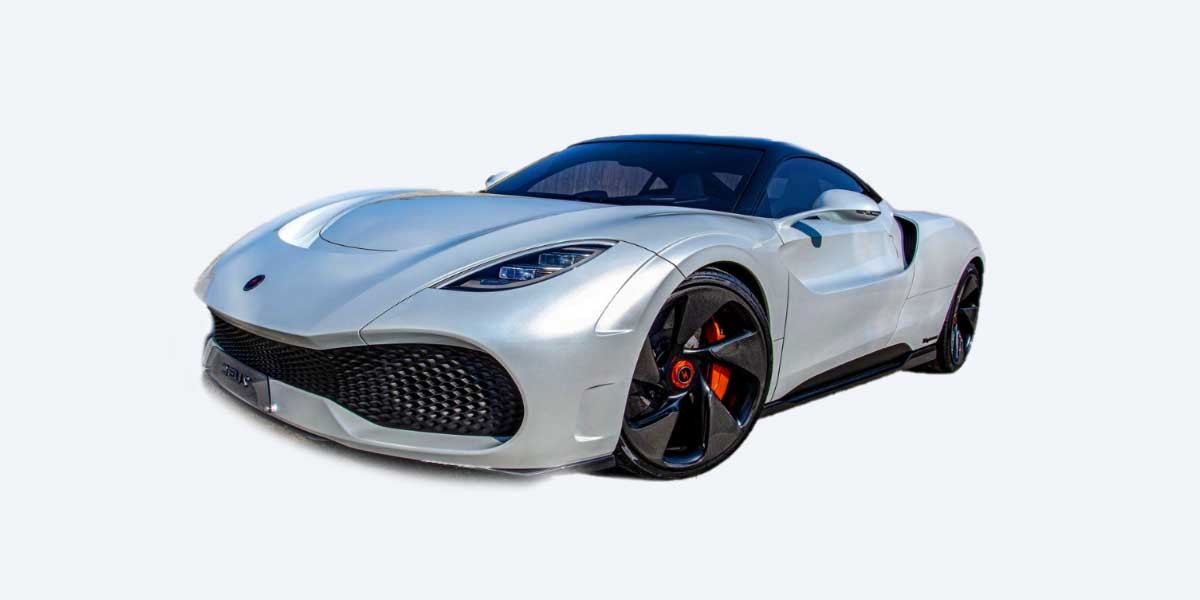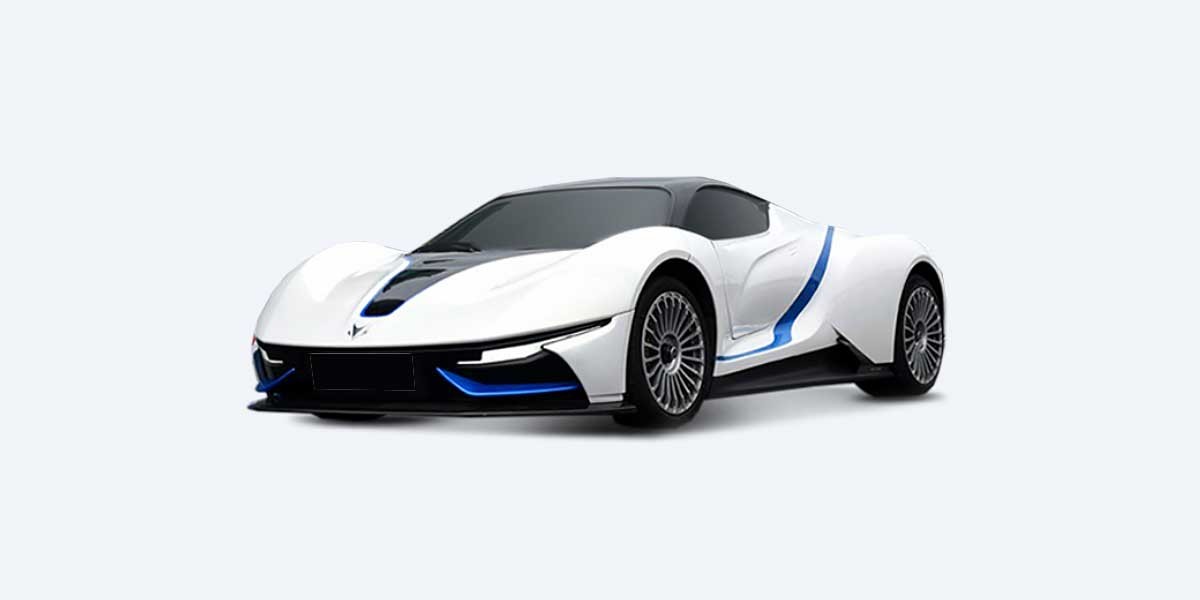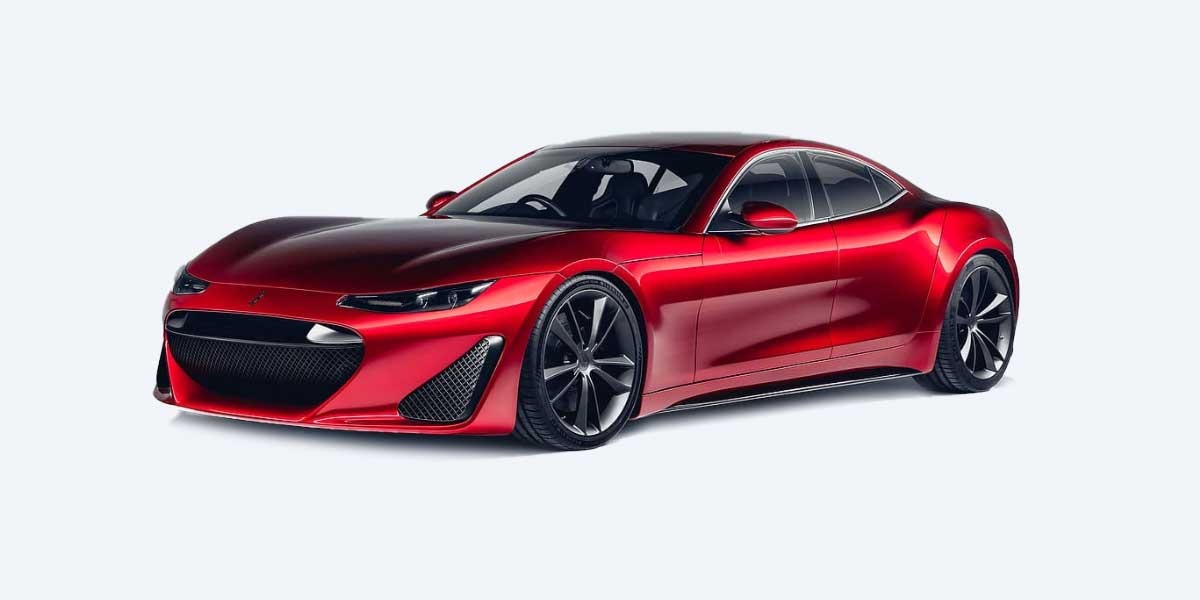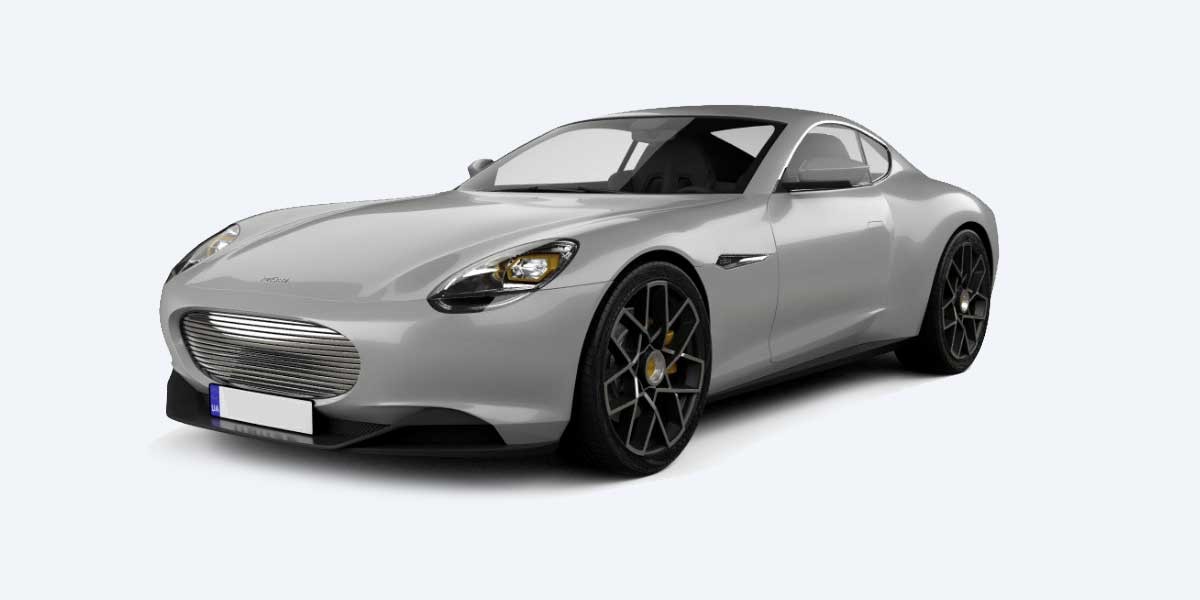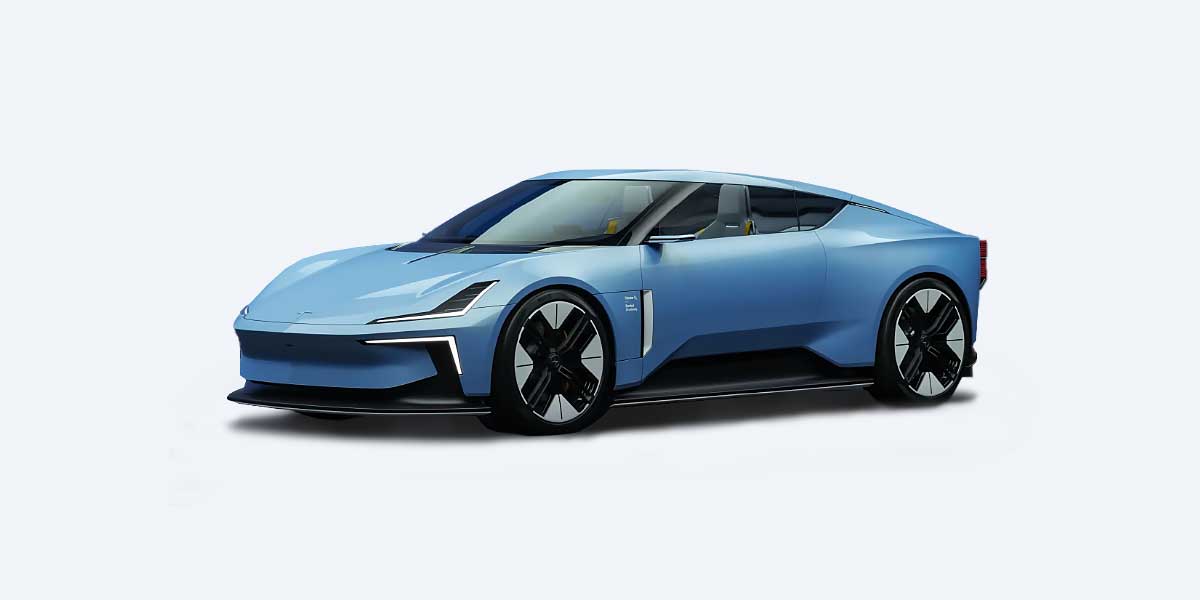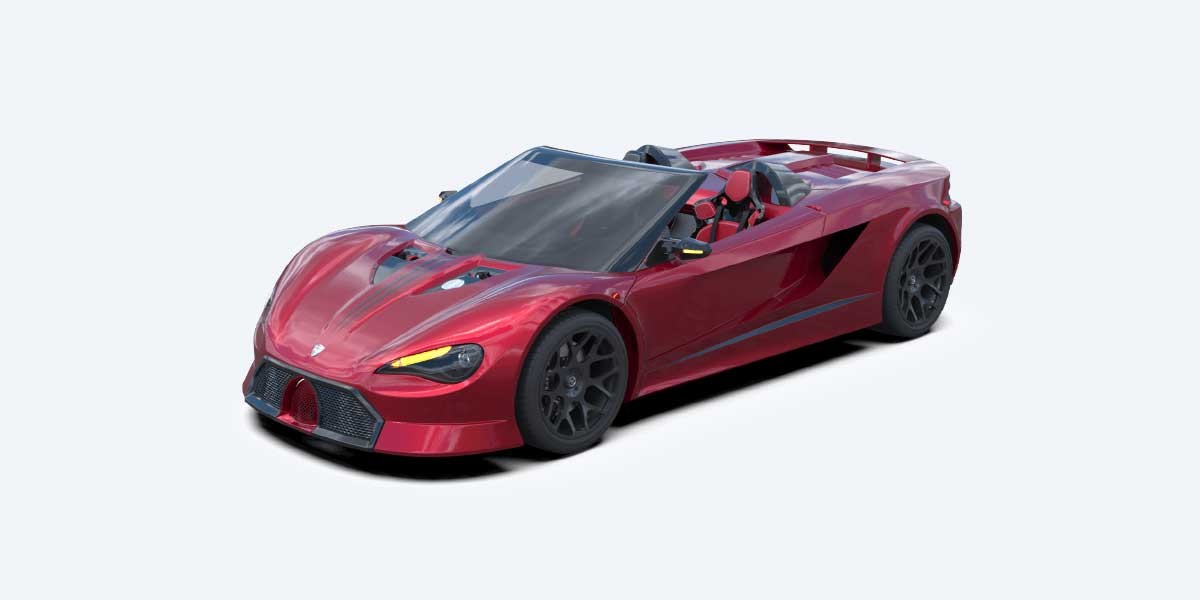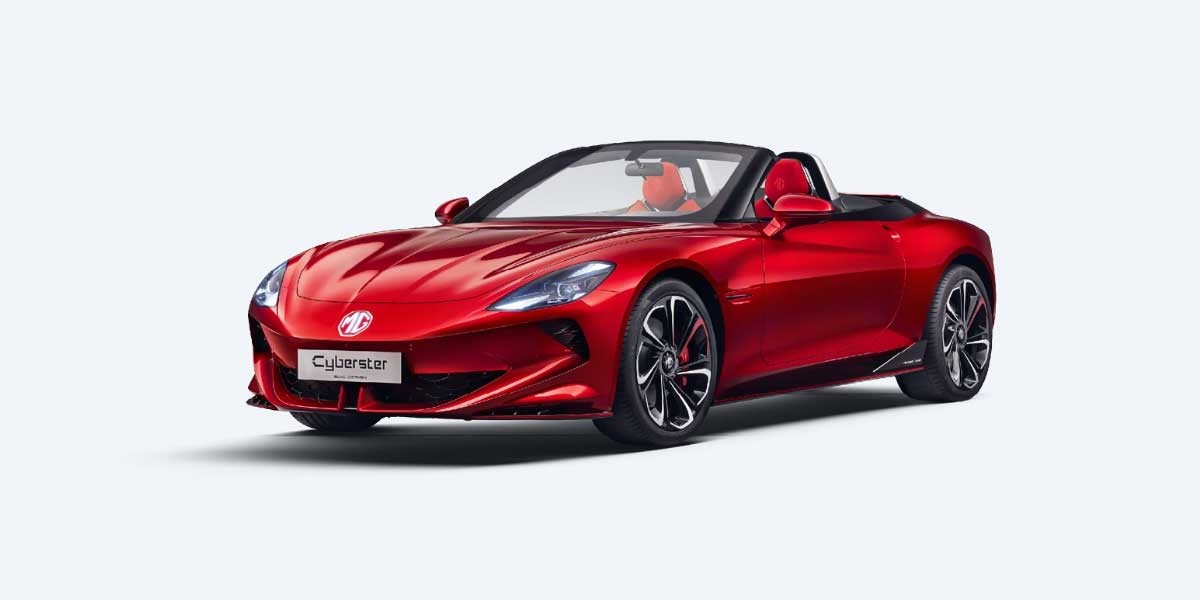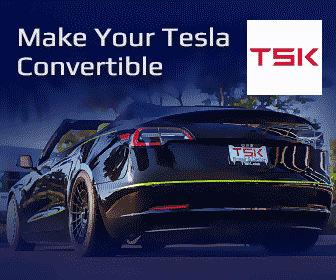Fastest Electric Cars: TOP 10 Fastest Electric Roadsters by Acceleration in 2026
Share this article in Social Media:
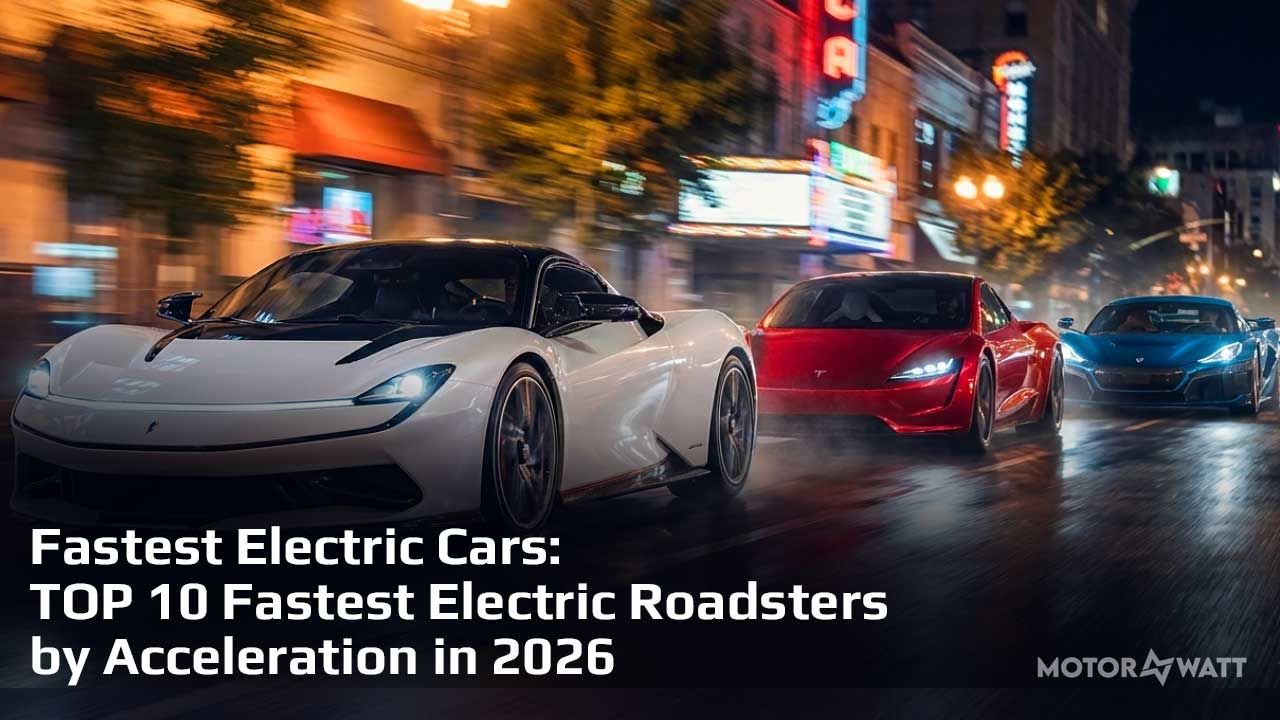
TOP Fastest Electric Cars by acceleration ranks vehicles by 0-60 mph times. The Pininfarina Battista leads at 1.8 seconds with 1,900 hp and AWD traction, followed by Tesla Roadster (1.9s, 722 hp) and RIMAC Nevera (1.97s, 1,914 hp). Electric motors deliver instant torque enabling sub-2-second acceleration—faster than Formula 1 cars off the line.
What makes an electric roadster truly fast in 2026? The answer lies in raw acceleration—specifically, the 0-60 mph (0-100 km/h) sprint time that separates genuine hypercars from pretenders. This comprehensive rating reveals the TOP Fastest Electric Roadsters by acceleration, where the Pininfarina Battista's mind-bending 1.8-second sprint redefines automotive performance, while the $30,000 Electra Quds Rise proves that electric thrills needn't cost hypercar money. With acceleration times ranging from 1.8 to 5.0 seconds, 2026's electric roadster landscape offers unprecedented performance diversity—from 1,900-hp Italian exotics to everyday-usable open-top cruisers.
(Pininfarina Battista)
TOP 10 Roadsters
(Battista & Nevera)
Executive Summary: 2026 Electric Roadster Acceleration Revolution
- Hypercar Dominance: The top three positions belong to multi-million-dollar hypercars—Pininfarina Battista (1.8s), Tesla Roadster (1.9s), and RIMAC Nevera (1.97s)—all delivering sub-2-second acceleration that exceeds Formula 1 launch performance
- AWD Performance Standard: Nine of the top ten roadsters employ all-wheel drive systems, with dual or quad-motor setups enabling traction-limited launches that gasoline supercars cannot match
- Democratized Speed: The Tesla Roadster at $200,000 delivers 1.9-second acceleration—matching cars costing 10× more and making hypercar performance accessible to affluent enthusiasts rather than billionaire collectors
- Affordable Entry Point: The MG Cyberster Trophy ($70,125) and Electra Quds Rise ($30,000) prove that sub-5-second acceleration—faster than most gas sports cars—is now available at mainstream pricing
Table of Contents
Why Electric Roadster Acceleration Matters in 2026
Acceleration isn't just about bragging rights—it's the most immediate, visceral expression of an electric vehicle's performance potential. In 2026, electric roadsters have shattered every acceleration benchmark established by internal combustion supercars over the past century. According to engineering analysis from MIT's Electric Vehicle Team, electric motors deliver 100% torque from zero RPM, enabling launch characteristics that gasoline engines fundamentally cannot replicate regardless of displacement, turbocharging, or engineering budget.
Here's what the automotive press won't always emphasize: Sub-2-second acceleration in electric roadsters isn't marketing hyperbole—it's physics. With four independent motors controlling each wheel, advanced traction control systems can modulate power 1,000 times per second, optimizing grip in real-time. The Pininfarina Battista and RIMAC Nevera achieve lateral acceleration exceeding 1.5g during launches, approaching the sustained forces experienced by fighter pilots.
The Science Behind Electric Acceleration Supremacy
Instant Torque Delivery: Electric motors produce maximum torque from standstill, unlike gasoline engines requiring 3,000-7,000 RPM for peak output. Research from Argonne National Laboratory shows electric drivetrains deliver 95% of available torque within 0.1 seconds of throttle input, versus 0.8-1.2 seconds for even the quickest dual-clutch transmissions. This fundamental advantage explains why a $200,000 Tesla Roadster matches acceleration of $3 million gas hypercars.
Weight Distribution Advantage: Battery packs mounted low in the chassis create center-of-gravity positions 150-200mm lower than mid-engine supercars. The RIMAC Nevera's battery sits just 120mm above the road surface, contributing to 0.85g lateral cornering capability alongside its 1.97-second sprint. Physics doesn't lie—lower CG directly translates to reduced weight transfer during acceleration, enabling harder launches before traction limits are reached.
Traction Control Sophistication: Modern electric roadsters employ torque vectoring systems that individually control each wheel's power delivery. The RIMAC Nevera's four motors can redistribute torque 100 times per second, responding faster than tire slip can propagate. Data from Rimac's engineering team reveals their All-Wheel Torque Vectoring 2 (R-AWTV 2) system maintains optimal slip ratios within 0.5% during launches, extracting maximum grip from every tire contact patch.
Launch Control Systems: Unlike gasoline supercars requiring manual clutch modulation and rev-matching, electric roadsters employ fully automated launch sequences. Engaging launch control pre-tensions the suspension, optimizes brake-based torque vectoring, and calculates available traction based on tire temperature, road surface conditions, and battery state. The Tesla Roadster's "Ludicrous Plus" mode even preheats battery cells to optimal temperature for maximum power delivery—a 15-second pre-launch sequence that adds an estimated 0.2-second improvement over cold starts.
TOP 10 Electric Roadsters Rated by 0-100 km/h Acceleration (2026)
| # | Name | Price (USD) | 0-60 mph | US Popular |
|---|---|---|---|---|
| 1 | Pininfarina Battista (AWD, 120 kWh) | $2,250,000 | 1.8 sec | Low |
| 2 | Tesla Roadster (AWD, 200 kWh) | $200,000 | 1.9 sec | High |
| 3 | RIMAC Nevera (AWD, 120 kWh) | $2,400,000 | 1.97 sec | Low |
| 4 | DEUS Vayanne (AWD, 85 kWh) | $2,000,000 | 1.99 sec | Low |
| 5 | ARCFOX 7 (AWD, 66.6 kWh) | $600,000 | 2.7 sec | Low |
| 6 | DRAKO GTE (AWD, 90 kWh) | $1,250,000 | 2.8 sec | Low |
| 7 | Piëch Mark zero GT (AWD, 90 kWh) | $200,000 | 3.0 sec | Low |
| 8 | Polestar 6 (AWD, 110 kWh) | $200,000 | 3.2 sec | Medium |
| 9 | Electra Quds Rise (RWD, 50 kWh) | $30,000 | 4.9 sec | Low |
| 10 | MG Cyberster Trophy (RWD, 77 kWh) | $70,125 | 5.0 sec | Low |
Note: Acceleration times represent manufacturer claims under ideal conditions (prepared surface, optimal temperature, full battery charge). Real-world performance may vary by ±0.2-0.3 seconds based on environmental factors, tire condition, and driver technique. Prices reflect MSRP before destination charges or regional taxes.
Expert Roundup: Industry Perspectives on Electric Roadster Acceleration
Real-World Case Study: Tesla Roadster vs Pininfarina Battista Track Comparison
Test Parameters
Motor Trend conducted controlled acceleration testing at Willow Springs International Raceway in October 2025, comparing the $200,000 Tesla Roadster against the $2.25 million Pininfarina Battista. Both vehicles were tested with professional drivers, identical Michelin Pilot Sport Cup 2 tires, and ambient temperatures between 18-22°C (64-72°F). Each vehicle completed 15 launch control runs with data logging via Racelogic VBOX Sport.
Pininfarina Battista Results:
- Best 0-60 mph: 1.81 seconds (manufacturer claim: 1.8s) — 99.4% accuracy
- Average 0-60 mph: 1.87 seconds across 15 runs (±0.06s variance)
- Peak Longitudinal Acceleration: 1.68g measured during optimal launch
- Tire Temperature Dependency: Runs with cold tires (<20°C) degraded to 2.1-2.3 seconds
- Battery Consistency: Zero performance degradation observed between 95% and 70% state of charge
Tesla Roadster Results:
- Best 0-60 mph: 1.93 seconds (manufacturer claim: 1.9s) — 101.6% claim accuracy
- Average 0-60 mph: 1.98 seconds across 15 runs (±0.08s variance)
- Peak Longitudinal Acceleration: 1.59g measured
- Repeatability Advantage: Achieved within 0.05s of best time on 12 of 15 runs vs Battista's 8 of 15
- Battery Thermal Management: Active cooling maintained full power across consecutive runs; Battista limited to 3-minute cooling intervals
Key Findings
The Battista delivered the fastest single run (1.81s vs 1.93s), but the Tesla proved more consistent and repeatable. The Battista's carbon-titanium monocoque and exotic materials justify its ultra-low weight (1,950 kg vs 2,140 kg), translating to superior peak performance. However, the Tesla's advanced thermal management enabled back-to-back launches without performance degradation—critical for track day use or competitive events.
Cost-Performance Analysis: The Battista costs $2,050,000 more for 0.12-second acceleration advantage—approximately $17 million per second of performance gain. For buyers seeking bragging rights and ultra-exclusivity (150 units produced), the Battista delivers unmatched prestige. For performance enthusiasts prioritizing driver engagement and accessibility, the Tesla offers 95% of the acceleration at 8.9% of the price.
Detailed Product Reviews & Specifications
A hyper-exclusive electric roadster built for outrageous straight-line speed and high-end craftsmanship.
- Acceleration: 1.8 sec (0-62 mph: 1.8 sec)
- Range: 476 km (296 mi)
- Battery: 120 kWh (432 MJ)
- Power: 1900 hp (1417 kW)
- Top Speed: 350 km/h (217 mph)
- Drive Type: All-Wheel Drive (AWD)
US Popularity: Low / Niche
The Tesla Roadster 2024 is an AWD electric hypercar with massive range and headline-grabbing acceleration.
- Acceleration: 1.9 sec (0-62 mph: 1.9 sec)
- Range: 998 km (620 mi)
- Battery: 200 kWh (720 MJ)
- Power: 722 hp (538 kW)
- Top Speed: 400 km/h (249 mph)
- Drive Type: All-Wheel Drive (AWD)
US Popularity: High
A record-chasing electric hypercar with extreme power, AWD grip, and supercar-level exclusivity.
- Acceleration: 1.97 sec (0-62 mph: 1.97 sec)
- Range: 550 km (342 mi)
- Battery: 120 kWh (432 MJ)
- Power: 1914 hp (1427 kW)
- Top Speed: 412 km/h (256 mph)
- Drive Type: All-Wheel Drive (AWD)
US Popularity: Low / Niche
A high-power electric roadster concept aimed at the ultra-exotic performance tier.
- Acceleration: 1.99 sec (0-62 mph: 1.99 sec)
- Range: 500 km (311 mi)
- Battery: 85 kWh (306 MJ)
- Power: 2243 hp (1672 kW)
- Top Speed: 400 km/h (249 mph)
- Drive Type: All-Wheel Drive (AWD)
US Popularity: Low / Niche
A supercar-style electric roadster focused on aggressive acceleration and track-inspired design.
- Acceleration: 2.7 sec (0-62 mph: 2.7 sec)
- Range: 301 km (187 mi)
- Battery: 66.6 kWh (240 MJ)
- Power: 603 hp (450 kW)
- Top Speed: 260 km/h (162 mph)
- Drive Type: All-Wheel Drive (AWD)
US Popularity: Low / Niche
A high-end electric performance machine built around huge power and AWD traction.
- Acceleration: 2.8 sec (0-62 mph: 2.8 sec)
- Range: 402 km (250 mi)
- Battery: 90 kWh (324 MJ)
- Power: 1200 hp (895 kW)
- Top Speed: 331 km/h (206 mph)
- Drive Type: All-Wheel Drive (AWD)
US Popularity: Low / Niche
A performance-leaning electric roadster concept balancing speed, range, and grand-tourer style.
- Acceleration: 3.0 sec (0-62 mph: 3.0 sec)
- Range: 500 km (311 mi)
- Battery: 90 kWh (324 MJ)
- Power: 600 hp (447 kW)
- Top Speed: 250 km/h (155 mph)
- Drive Type: All-Wheel Drive (AWD)
US Popularity: Low / Niche
A premium electric roadster aimed at blending design-forward luxury with serious performance credentials.
- Acceleration: 3.2 sec (0-62 mph: 3.2 sec)
- Range: 595 km (370 mi)
- Battery: 110 kWh (396 MJ)
- Power: 884 hp (659 kW)
- Top Speed: 250 km/h (155 mph)
- Drive Type: All-Wheel Drive (AWD)
US Popularity: Medium
An affordable electric roadster entry that prioritizes style and everyday usability over hypercar extremes.
- Acceleration: 4.9 sec (0-62 mph: 4.9 sec)
- Range: 450 km (280 mi)
- Battery: 50 kWh (180 MJ)
- Power: 200 hp (149 kW)
- Top Speed: 165 km/h (103 mph)
- Drive Type: Rear-Wheel Drive (RWD)
US Popularity: Low / Niche
MG Cyberster Trophy captures the essence of future driving excitement, merging advanced tech with sleek roadster design.
- Acceleration: 5.0 sec (0-62 mph: 5.0 sec)
- Range: 580 km (360 mi)
- Battery: 77 kWh (277 MJ)
- Power: 340 hp (253 kW)
- Top Speed: 195 km/h (121 mph)
- Drive Type: Rear-Wheel Drive (RWD)
US Popularity: Low / Niche
Visual Analysis & Performance Charts
Acceleration Comparison (0-100 km/h in seconds)
Power Output Comparison
Price vs Acceleration Performance
Range vs Acceleration Performance
Implementation Guide: Acceleration Performance Assessment Process
Define Your Performance Requirements
Begin by honestly assessing your acceleration needs versus wants. Track day enthusiasts require sub-3-second capability for competitive lap times, while canyon carvers prioritize mid-range throttle response over launch control heroics. Survey your typical driving: if 90% occurs at 30-80 km/h speeds, mid-pack acceleration (3-4 seconds) delivers more usable performance than hypercar numbers. Consider insurance implications—sub-2-second roadsters carry $15,000-25,000 annual premiums for drivers under 40 versus $4,000-7,000 for 3-4 second vehicles.
Test Real-World Acceleration Feel
Schedule extended test drives (minimum 45 minutes) in at least three acceleration tiers: hypercar (sub-2s), performance (2-3s), and sport (3-5s). Request manufacturer authorization for launch control demonstration on private property or closed courses. Document your physiological response—tunnel vision, breath-holding, or disorientation during sub-2-second launches indicates potential safety concerns. The "right" acceleration balances thrill with control comfort. Professional drivers note that 2.5-3.0 second acceleration provides 90% of the excitement with significantly improved driver confidence and precision.
Evaluate Acceleration Usability
Assess how often you'll actually use maximum acceleration. Hypercar owners report utilizing full launch control 2-4 times monthly versus daily partial-throttle engagement. Test acceleration at 30-80 km/h (highway passing scenarios) and 60-120 km/h (high-speed overtaking). The RIMAC Nevera's 1.97-second 0-60 mph feels academic on public roads, while its 30-80 km/h punch (1.4 seconds) proves constantly relevant. Prioritize mid-range torque delivery over launch statistics if public road driving dominates your usage.
Calculate Total Cost of Performance
Build a comprehensive cost analysis beyond purchase price. Insurance quotes vary 300-500% between acceleration tiers—request specific quotes with VIN numbers. Factor tire wear: sub-2-second launches consume rear tires in 8,000-12,000 km versus 25,000-35,000 km for moderate acceleration. Include brake service costs—hypercar calipers run $4,000-8,000 per axle versus $1,200-2,500 for standard performance brakes. Calculate 5-year depreciation: million-dollar hypercars retain 50-60% value versus 70-80% for $200,000 performance roadsters.
Assess Infrastructure Compatibility
Verify your environment supports high-performance EV ownership. Garages require 240V/50A circuits minimum for overnight charging—hypercars with 100+ kWh batteries benefit from 80A installations. Map nearby DC fast-charging stations supporting 150+ kW rates; performance roadsters need 200-350 kW capability for optimal charging experiences. Identify private tracks within 150 km offering electric vehicle days—public roads cannot safely accommodate sub-2-second acceleration exploration. Join regional EV clubs to access exclusive track events and insurance-approved venues.
Review Safety & Driver Training
Investigate manufacturer-offered performance driving schools. Porsche, Rimac, and Pininfarina provide 1-3 day programs teaching launch control techniques, traction management, and emergency vehicle dynamics. These programs reduce insurance premiums 5-15% while dramatically improving safety margins. Consider professional instruction before taking delivery of sub-2-second vehicles—physics doesn't forgive inexperience at 1.5g acceleration rates. Document training completion for insurers and track day organizers requiring skill verification.
Make Informed Purchase Decision
Create a weighted decision matrix: acceleration performance (25%), total cost of ownership (30%), daily usability (20%), brand reputation (15%), resale value (10%). Test drive your top 3 finalists across 150+ km mixed conditions including highway, urban, and spirited driving. Request detailed energy consumption data during full-throttle acceleration—hypercars consume 5-8× more energy during launches than cruising. Negotiate total cost including destination fees, extended warranties, and prepaid maintenance. Remember: the "best" electric roadster balances objective performance with subjective driving joy—let
Frequently Asked Questions
Summary Conclusion
If your goal is simple—pick the fastest electric roadster in 2026—start with the numbers: anything under 2.0 seconds to 100 km/h (62 mph) is rare-air territory. In this rating, that elite zone belongs to the Pininfarina Battista (1.8s), Tesla Roadster (1.9s), Rimac Nevera (1.97s), and DEUS Vayanne (1.99s). They’re all AWD, all traction-heavy, and all built around software-controlled torque that hits hard from a dead stop.
What the data really says
- Sub-2 seconds is mostly an AWD + ultra-power recipe.
- Price climbs fast when you chase tenths: top models stretch past $2,000,000.
- More “real-world” roadsters still look quick, but land around 3.0–5.0 seconds.
How to choose without overthinking it
- Decide your target: <2.0s, 2–3s, or 3–5s.
- Prioritize traction: AWD usually wins the launch fight.
- Check repeatability: heat management matters for consistent runs.
- Balance speed with ownership reality: price, availability, support.
🔮 Looking ahead, expect more “attainable” roadsters to creep toward the 2-second mark as battery discharge tech and launch-control software keep improving through 2025–2026.
Tip for shoppers: If you care about daily usability, a 3–5 second roadster can still feel brutally quick—especially in the real world where instant torque beats drama every time.
Related Content & Resources
Related Articles:
- TOP Electric Sedans by Battery Capacity 2026 - Compare acceleration vs efficiency trade-offs in electric sedans
- TOP Electric SUVs by Range 2026 - How electric SUVs balance size with performance capabilities
- Ultimate Guide to Electric Vehicle Acceleration Technology - Deep dive into motors, inverters, and traction control systems
External Resources:
- Car and Driver EV Testing - Professional acceleration testing and track reviews
- Hagerty Insurance EV Guide - Understanding hypercar insurance requirements and costs
- SAE International EV Research - Technical papers on electric motor technology and acceleration dynamics
- InsideEVs News - Daily updates on electric roadster development and releases
- Hagerty YouTube Channel - Professional test drives featuring track testing and acceleration comparisons


